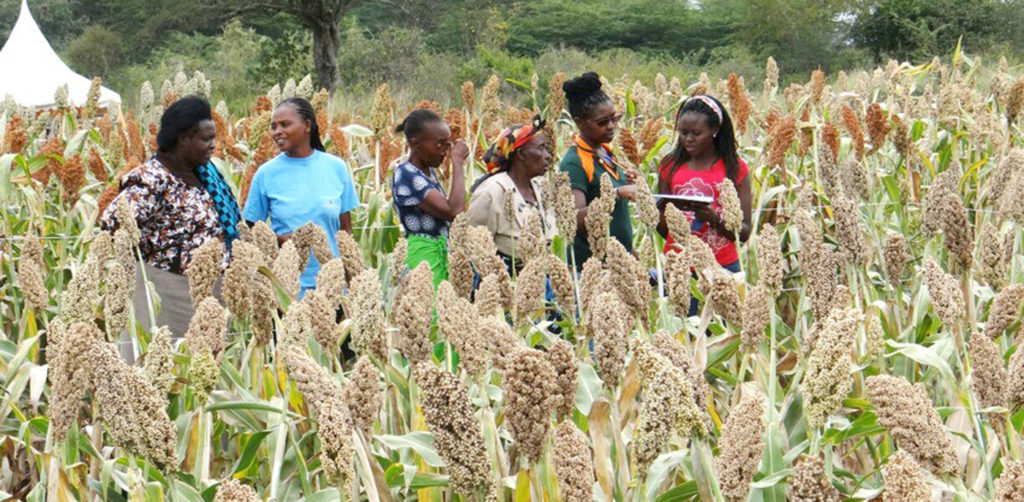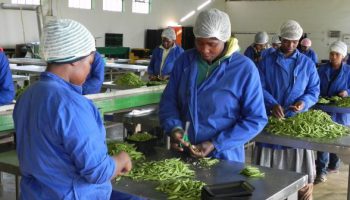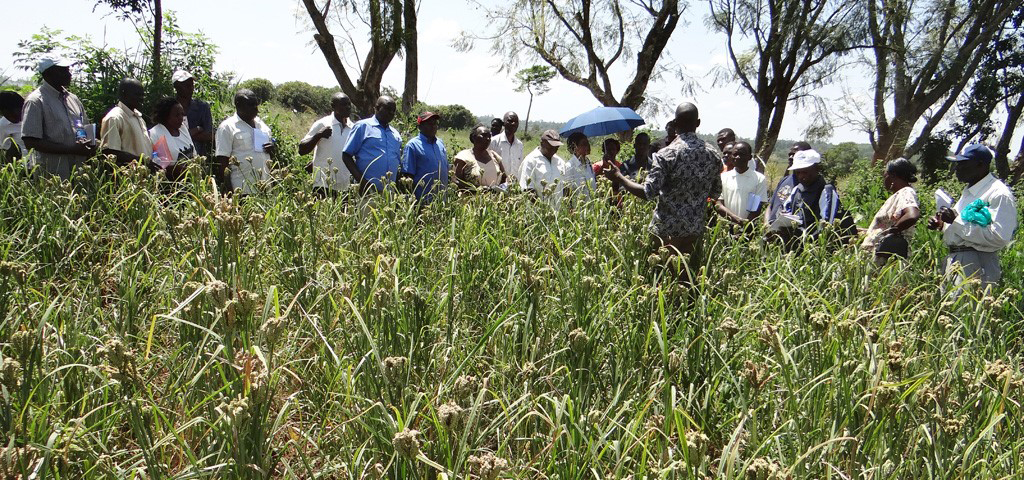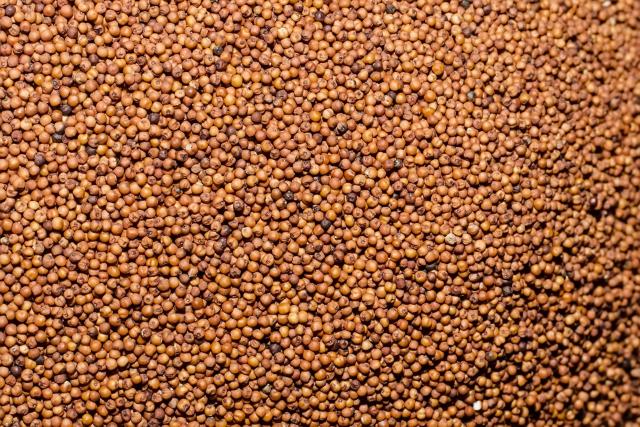25 WAYS TO PROFIT FROM THE TAMBA (FINGER MILLET ) VALUE CHAIN IN NIGERIA
25 ways to profit from the Tamba (Finger Millet ) Value Chain in Nigeria
The food sector in Nigeria is one that does possess the greatest potential but also involves a lot of risk as well. This is because in developing nations like Nigeria, the various inputs, tools and systems that are required for maximum utilization of the agricultural sector are generally lacking and often require capital investments that are not readily available. As such, the use of local methods are the best way to overcome the challenges faced in the sector. This brings to the fore one of the most overlooked and underutilized food crops in Nigeria referred to as finger millet in English or tamba in Hausa language. Rich in nutrients, finger millet is a staple food in the middle belt region of Nigeria and is used to make gruel (Kunu), porridge and other foods which offer suitable alternatives to more expensive crops in the region like soybean and other economic crops which are out of the reach of Nigeria’s poor and middle class.
 25 ways to profit from the Tamba (Finger Millet ) Value Chain in Nigeria
25 ways to profit from the Tamba (Finger Millet ) Value Chain in Nigeria
A brief primer about Finger Millet
Eleusine coracana is an annual plant widely grown as a cereal in the arid areas of Africa and Asia. Earliest records of its cultivation in India show that it was cultivated in the Hallur region of Karnataka in the later Iron Age. It remains one of the main ingredients of the staple diet in Karnataka.
It is commonly known as finger millet, African finger millet, caracan millet, and koracan. The name ragi (ರಾಗಿ) is originally the name of finger millet in Kannada. In Tamil it is called kEzhvaragu (கேழ்வரகு). E. coracana is native to the Ethiopian Highlands where it is called dagusa. It is very adaptable to higher elevations and is grown in the Himalaya up to 2,300 metres in elevation.
According to K. T. Achaya, the Ragi originated in East Africa, and came to India around 2000 BCE; it has been found in an Indian archaeological site dated to 1800 BCE.
(Source: Wikipedia.org)
 25 ways to profit from the Tamba (Finger Millet ) Value Chain in Nigeria
25 ways to profit from the Tamba (Finger Millet ) Value Chain in Nigeria
It is from the Indians that we have the variations of finger millet that we have in Nigeria today. This is due to East African influences and colonial rule that Finger millet came to Nigeria today.
Finger millet is especially valuable as it contains the amino acid methionine, which is lacking in the diets of hundreds of millions of the poor who live on starchy staples such as cassava, plantain, polished rice, or maize meal. Finger millet can be ground and cooked into cakes, puddings or porridge. The grain is made into a fermented drink (or beer) in Nepal and in many parts of Africa. The straw from finger millet is used as animal fodder. It is also used for a flavored drink in festivals.
Thus, finger millet is very viable as an important source of nutrition which is affordable. The following depict the ways to profit from the finger millet value chain in Nigeria:
- Provision of land for the cultivation: This is one way investors can partake in the value chain. Without land, crops cannot grow. So this is the most important part of the value chain. Providing land at a price using a lease mechanism provides passive income that the land owner can hold unto as profit as the farmer leasing the land actually does not do anything to the land other than use it for farming of the finger millet.
- Provision of the labor for cultivation: Provision of labor for cultivation provides another way to profit as the land requires ploughing before planting. In Africa generally and Nigeria to be precise, ploughing machines are generally in short supply so as such manual labor is readily available. So, provision of this manual labor can prove to be profitable. Also, the use of labor as well during the planting is a viable idea that can be considered.
 25 ways to profit from the Tamba (Finger Millet ) Value Chain in Nigeria
25 ways to profit from the Tamba (Finger Millet ) Value Chain in Nigeria
- The provision of insecticides and pesticides during the planting season: This activity is one that can give the suppliers immediate profit as during planting season, insecticides and pesticides are needed. Supplies of the required chemicals provide a stream of income to the enterprising individual.
- Supplies of implements for cultivation: Farmers know how to farm. That is their job. It is the job of metal specialists to create manual implements for the farming activities. It is also the job of the entrepreneur to supply these farmers with the implements required for cultivating their farms. As such, this presents yet another opportunity that profit can be made from.
- Supplies of fertilizers; both organic and inorganic: Supplies of fertilizers during the planting season is one sure way to profit from the finger millet value chain. This is because the profit for the supplier is sure and as such, the supplier needs only to avail himself or herself of the perfect opportunity to do business.
- Provision of labor for weeding: During this stage of the growth of the crop, weeds are known to be an issue and as such the provision of labor for weeding is yet another way and method to profit from the value chain.
 25 ways to profit from the Tamba (Finger Millet ) Value Chain in Nigeria
25 ways to profit from the Tamba (Finger Millet ) Value Chain in Nigeria
- The supply of weedicides during the planting season: Provision of chemicals for weeding provide an opportunity for enterprising individuals as manual weeding is usually not totally comprehensive in the elimination of weeds on the crop. Application of weedicides greatly reduces the probability of the interference of weeds in the growth and development of the crop.
- The supply of labor during harvest: although the crop is usually harvested twice in the farming season due to the unequal flowering of the crop, provision of labor during these periods in another way and method of profiting from the finger millet value chain.
- The provision of mechanical drying machines post-harvest: Such machines can be produced locally from other scrap metals and metal products by metal workers who have the prerequisite technical skills in the metal working profession. These drying machines allow for the increase of solar insolation so as to speed up the drying process. Again, this provides yet another opportunity for profit.
- The provision of electrical drying machines post-harvest: electrical drying machines provide a faster way for the drying of the finger millet. This provides an improvement as against traditional sun drying and its variants. The only two requirements for this particular element of the process to be effective is the adequate supply of electricity and the use of the machine on a large scale! Another method of profiting from the finger millet value chain!
- The provision of transportation facilities: This of course provides quick and tidy profits to the transportation providers as such services will be bulk. Transportation facilities are always one of those essential businesses which any enterprising individual can participate in and make tidy profits from.
 25 ways to profit from the Tamba (Finger Millet ) Value Chain in Nigeria
25 ways to profit from the Tamba (Finger Millet ) Value Chain in Nigeria
- The provision of storage facilities for the harvested finger millet: This is is yet another way for profit to be made. Storing of foods is one way that most people who are into the agro-allied sector make quiet profits without planting, harvesting or processing of such foods.
- The provision of millet mills: Due to the special nature of finger millet seeds (its seed is bound tightly to its coat), special millet mills have to be provided for its effective milling into powder. This of course provides a unique opportunity for creative innovators to try out their hands at making an invention that will help increase the shelf life of the finger millet.
- Wholesale supplies of finger millet to target markets: Once proper market analysis has been conducted for the marketing and supplies of the finger millet, traders can take advantage of bulk supplies of the product to target markets. Especially to specific markets that will require the need of the product consistently. Such target markets include but are not limited to: Children, Lactating Mothers, diabetic Patients and so on and so forth.
- Retail supplies to target markets: If due to the lower amounts of trading capital available the trader can only afford smaller amounts of the product, then retailing is a very good place to start in the making of profit from the finger millet value chain. Retailing also allows for the retailer to save up and increase the trading volume so that sometime in the future, wholesale trading can indeed become a reality.
- Supplies of inputs to the processing of the raw finger millet: Those who process the raw finger millet are usually not the farmers. They are middlemen who process the raw finger millet into flours and mills for packaging which when packaged are consumed by the target markets. The provision of inputs to these set of individuals in the form of packaging materials, machines and other inputs into their business can also be lucrative as they require such to make their businesses to work.
 25 ways to profit from the Tamba (Finger Millet ) Value Chain in Nigeria
25 ways to profit from the Tamba (Finger Millet ) Value Chain in Nigeria
- Marketing of the processed product to target markets: This is the most important component of the value chain as without the marketing and sales of the final product, there would not exist any value for the producers and traders who have transformed the finger millet to the final product which is then appreciated and consumed by the retail consumer. Here also, commissions made can even be bigger than all other remunerations made during the value chain. This is because those individuals who are into marketing and sales have to be compensated adequately for their work in making sure the product gets sold!
Finger millet is a food that can be profitable for everybody involved in the Value Chain. Being a low-cost alternative to processed foods like Quaker oats, Golden morn, Corn flakes and others, this presents a unique opportunity for the entrepreneur to be able to test his or her skills at making it big in a country like ours.
Are there any other ways that profit can be made from the finger millet value chain? If you have any, please share with us!
For further consulting, please fell free to contact us on 08105636015 or 08076369735 or send an email to dayohub@gmail.com
Related